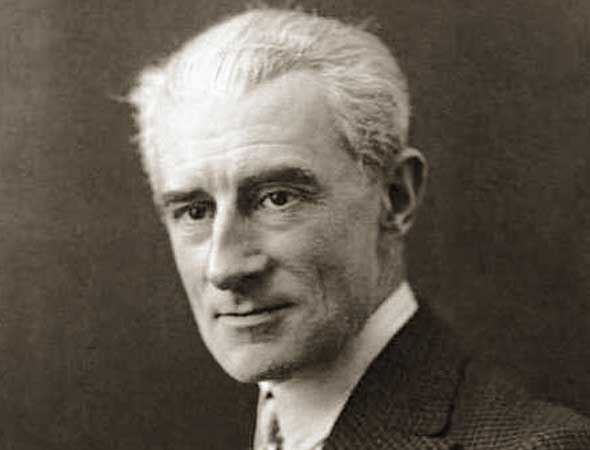RAVEL: La valse
by Jeff Counts
THE COMPOSER – MAURICE RAVEL (1875-1937) – When Debussy died in 1918, Ravel found the throne of French concert music unguarded, and the unobstructed path did not suit him. For years, the two men had been set up as rivals in Paris and, though neither of them gave the topic any oxygen, it led to a cooling between them. Neither man liked being called an Impressionist (which they were then and still are today) and likely resented how the superficiality of the word masked their individuality as artists. In any case, Ravel had never wanted to be the top man of Parisian musical letters and when that became suddenly inevitable, he demurred and moved away from the city.

THE HISTORY – Ravel reportedly believed that every composer, himself included, secretly wished they could write an excellent waltz, but most were scared off by the difficulty and the wealth of enviable examples already in the repertory. For years, Ravel had entertained the idea of creating an homage work to Johann Strauss, Jr. entitled Wien (Vienna). When Serge Diaghilev approached him after World War I to write a new ballet, he thought he had finally found reason to see it through. Diaghilev’s name is synonymous with so many of the 20th century’s great orchestral scores it is easy to forget the ones he rejected. Ravel gave the impresario a two-piano sneak peek of Wien in the spring of 1920. Poulenc and Stravinsky were in attendance as well and Poulenc recalled the disastrous tension when Diaghilev referred to the music as “genius” but “not a ballet.” Ravel was highly offended and broke ties with Diaghilev on the spot. So enduring was the animosity between them, it is believed Diaghilev challenged Ravel to a duel a few years later. Thankfully, cooler headed prevailed. La Valse (instead of Wien) premiered as an orchestral work later in 1920 and finally produced as a ballet in 1928 by none other than Ida Rubenstein (yes, the same competitor of Diaghilev that had commissioned both Boléro and Stravinsky’s The Fairy’s Kiss – which led to the latter’s own permanent split with the Ballets Russes). The grey, brooding mood of La Valse has been popularly attributed to Ravel’s impressions of the Great War and its numberless atrocities, but he remained ever resistant to that interpretation. Certainly, Ravel was unearthing something of a quaint relic with his waltz, in that the war had fully killed the 19th century and all such confectionary comforts. Waltzes were just one among the many things of the past, a memory of a time before trenches and gas clouds and mechanized slaughter. It’s all in there, though, just beneath the surface. Whether or not Ravel wants us to think so.
THE WORLD – Elsewhere in 1920, the American Civil Liberties Union was created, legendary explorer Robert Peary died, the Ottoman Empire’s dissolution began, the very first “Ponzi” scheme was attempted and Joan of Arc was canonized.
THE CONNECTION – La Valse has been programmed frequently by the Utah Symphony. The most recent Masterworks performance was just last season with Maestro Thierry Fischer conducting.











